SIGGRAPH 2003: CG03: Computer Graphics 2003
Chair(s):
- Michael Wright
-
- Otis College of Art & Design
- M Ragsdale Wright Studios
Art Show Administrator(s):
- April Ramey
-
- Capstone Solutions, Inc.
- Susan Parker
-
- Parker and Associates
Location:
San Diego, California, United States of America
Dates:
July 27th-July 31st, 2003
Art Show Overview:
The Art Gallery celebrates 30 years of annual SIGGRAPH conferences with CG03: The Art of SIGGRAPH 2003. Returning to its roots, the gallery emphasizes prints, painting, sculpture, animation, and video that have a digital component in their creation.
CG03 is both a curated and juried exhibition presenting a visual force both driven by and reflective of the postmodern mosaic. Exceptional examples of state-of-the-art computer art and design selected by a group of distinguished professionals from all areas of the art community are integrated throughout the conference and in the immediate San Diego community, allowing for a greater focus on art as part of the overall media matrix. In this way, artists’ ideas, thoughts, and truths, reflecting the layered, non-linear, pluralistic nature of our times, are presented to a wider audience that can view the art in a totally different, inclusive context that emphasizes art’s non-isolated global voice. The works are international in scope, representing the diversity of interests in both theme and technique of the current artistic community yet exhibiting common visual threads: an interest in visual perception, the penetration of the Cartesian grid, and a commitment to personal artistic vision.
Following this introduction are six essays by computer graphics professionals who are involved in this year’s exhibition. These artists, art historians, authors, and curators, who have been involved in the field since the 1970s, give their perspective on the current integration of visual arts and the computer.
Michael Wright
Committee(s):
- Bonnie L Mitchell
-
- Bowling Green State University
- Dan During
-
- New York Institute of Technology (NYIT)
- Dena Elisabeth Eber
-
- Bowling Green State University
- Rachel Teagle
-
- Museum of Contemporary Art San Diego
- Renata Spiazzi
-
- The San Diego Art Institute
- Karen Sullivan
-
- Ringling School of Art and Design
- Sue Gollifer
-
- University of Brighton
- ISEA International Headquarters
- Timothy Field
-
- The San Diego Art Institute
- Tracy Colby
-
- Otis College of Art and Design
- Victor Acevedo
-
- School of Visual Arts
- Paul Siboroski
-
- Reuben H. Fleet Science Center
- Jeffrey W. Kirsch
-
- Reuben H. Fleet Science Center
- Carol Hobson
-
- University of California, San Diego
- Steven Burns
-
- San Diego Photoshop Users Group
- Patric D. Prince
-
- California State University
- Jeffrey W. Kirsch
-
- Reuben H. Fleet Science Center
- Timothy Field
-
- The San Diego Art Institute
- Rachel Teagle
-
- Museum of Contemporary Art San Diego
- Lynn Whitehouse
-
- San Diego Public Library
- Paul Siboroski
-
- Reuben H. Fleet Science Center
- Jean Branon
-
- The Art Institute of California, San Diego
- Kerstin Gottke-Hough
-
- Reuben H. Fleet Science Center
- Renata Spiazzi
-
- The San Diego Art Institute
- John Gordon
-
- San Diego State University
- Dan Dement
-
- The Art Institute of California
- Dena Elisabeth Eber
-
- Bowling Green State University
- Sue Gollifer
-
- University of Brighton
- ISEA International Headquarters
- Bonnie L Mitchell
-
- Bowling Green State University
- Dan During
-
- New York Institute of Technology (NYIT)
- Karen Sullivan
-
- Ringling School of Art and Design
- Victor Acevedo
-
- School of Visual Arts
- Tracy Colby
-
- Otis College of Art and Design
- Marcie Medina
-
- Otis College of Art and Design
- Eric Acevedo
-
- Monterey Digital
- Bonnie L Mitchell
-
- Bowling Green State University
General Committee:
Additional Committees:
Art Papers Reviewers:
Website:
https://www.siggraph.org/s2003/conference/art/index.html
Exhibition Artworks:
-
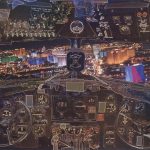
Uncontrolled Flight to Vegas
[George Zucconi]
Categories: [2D & Wall-Hung] -
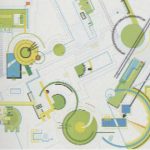
Under Construction
[John-Dan Key]
Categories: [2D & Wall-Hung] -
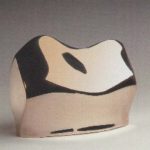
Untitled
[Paul Elia]
Categories: [3D & Sculpture] -

Utopian Paradise
[Masa Inakage]
Categories: [2D & Wall-Hung] -

Variations 703
[Bruce Wands]
Categories: [Installation] [Interactive & Monitor-Based] -

Vengeance is Mine
[Dorothy Simpson Krause]
Categories: [Artist Book] -
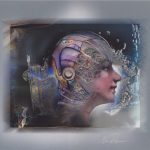
Visage
[Ned Meneses]
Categories: [2D & Wall-Hung] -
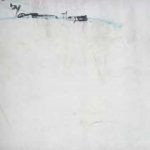
Wallworks
[Jurgen Faust]
Categories: [2D & Wall-Hung] -
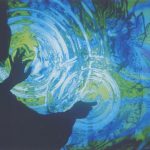
Waves_H
[Kumiko Kushiyama]
Categories: [3D & Sculpture] [Interactive & Monitor-Based] -
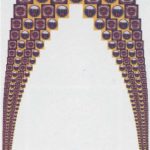
Wish
[Bob Witte]
Categories: [2D & Wall-Hung] -
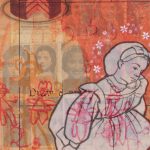
Word Play
[Melissa Harshman]
Categories: [2D & Wall-Hung] -
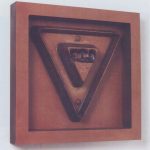
Yield Displaced
[Brit Bunkley]
Categories: [3D & Sculpture] -

Your Dreams and Omens Revealed
[Diane Fenster]
Categories: [2D & Wall-Hung] -
![[Unnatural Elements : Avatar Portraits]](https://digitalartarchive.siggraph.org/wp-content/uploads/2017/11/2003_FlanaganChangChe_UnnaturalElements-AvatarPortraits-150x150.jpg)
[Unnatural Elements : Avatar Portraits]
[Ho Chien Chang] [Wu Fu Che]
Categories: [2D & Wall-Hung]
« First
‹ Previous
1
2
3
Exhibition Writings and Presentations:
-
Title:
Is the Age of Expertise Over?
Author(s):
Category: Essay
Abstract Summary:
As I read journalists’ reports about the decline in confidence in many financial institutions, the troubles in modern education, and the failure of diplomacy to solve international problems, I am faced with the question: Is the age of expertise over?
[View PDF]Title: Recovering History: Critical and Archival Histories of the Computer-Based Arts
Author(s):
Category: Essay
Abstract Summary:
During the 1960s, artists first began to get involved with digital computing. By 1968, it was possible for Jasia Reichardt to curate a survey of digital work in the influential Cybernetic Serendipity exhibition held at London’s Institute of Contemporary Art (ICA). The show went on to tour the United States and Japan, and many young artists were inspired to get involved with computers after seeing it.
[View PDF]Title: The Art of Understanding: Or, A Primer on Why We Study History
Author(s):
Category: Essay
Abstract Summary:
Why did a substantial number of submissions to the SIGGRAPH 2003 Art Gallery demonstrate a lack of knowledge of the history of digital art? There is an art to understanding creative invention that involves information as well as experience and personal preference.
[View PDF]Title: The Digital Becomes Contemporary
Author(s):
Category: Essay
Abstract Summary:
We are at a special and paradoxical moment in the development of digital art. Now that it is finally gaining widespread public and critical attention, digital art is also being quickly absorbed into the world of contemporary art. The next generation of artists and critics will not look at making art with a computer as something extraordinary or unusual. This phenomenon is already quite apparent in galleries in New York and abroad. While galleries like Postmasters and Bitforms specialize in new-media art, numerous other galleries in Chelsea exhibit similar work, but do not make the distinction that it is new-media art. Another growing trend in New York is for artists to display prints along with new media as an integral part of the exhibition. The return to the object is due in part to the recent widespread availability of archival printing methods. Museums are also in the process of refitting to accommodate the next wave of contemporary art. The Museum of Modern Art in New York has closed for two years to update its galleries, and the Stedelijk Museum of Modern Art in Amsterdam is planning a major renovation for 2004. For those of us who have followed the SIGGRAPH Art Gallery for many years, this acceptance of digital art by the contemporary art world is refreshing, but also raises many questions. Digital art has operated outside the art establishment for many years, and this has allowed it to remain relatively free.
[View PDF]Title: Why Digital Prints Matter
Author(s):
Category: Essay
Abstract Summary:
In the beginning(s) was the digital image.
It has been established that “computer art” started approximately in 1950 with Ben Laposky’s oscilloscope images, which he generated with analog electronics and then recorded onto high-speed film. This event occurred in the wake of the then-recent developments of the first electronic digital computers: a machine built by John Atanasoff and Clifford Berry in 1941 and then the well known Electronic Numerical Integrator and Computer (ENIAC), the first major general purpose computer, introduced in 1946. Completed in 1951, the Whirlwind Computer was the very first to be equipped with a (vector scope) video display monitor. A “bouncing ball” animation was actually produced to demo this feature.
[View PDF]Title: Will There Be "Computer Art" in 2020?
Author(s):
Category: Essay
Abstract Summary:
It is ironic that the more computers infiltrate our daily lives, the more they seem to disappear. Computer-driven technologies like ATMs and email are part of the subconscious landscape of modern life and require no more attention to use than, say, tuning the radio while driving the car. As the science of computer graphics continues to progress, will computer art become a more prominent feature of the art world? Or will it, like the technology it uses, merge, at least in part, with the background of other art materials and methods?
[View PDF]



